Love it or hate it, 32″ mountain bike wheels are getting some serious attention from big names. Apparently, BMC is taking the concept pretty seriously – chopping up and reassembling a carbon Fourstroke XC bike to see how those big wheels roll. We got some sneak peek photos from a photographer friend of Bikerumor on the ground in Andorra this weekend, where BMC’s Impec Lab R&D team were testing their latest frankenbike. It looks like they are calling it Project Fahrenheit, presumably a nod to the freezing point of water and this new wheel size.

And when we asked BMC what was going on, they were surprisingly quite open to talk about these early days of their 32″ fact-finding project!f
32″ BMC Franken Fourstroke tested on Andorra World Cup

A few weeks ago, this prototype 32″ BMC Frankenbike was still just a standard medium-sized carbon Fourstroke XC bike and a pile of alloy frame junctions, fresh off their in-house CNC mill in Switzerland. Now, a couple of BMC Impec Lab engineers and Factory Team XC racers are riding it around the Andorra World Cup Racetrack to see if they think 32″ wheels will make sense for cross-country racing. Or whether it is all simply another hare-brained idea someone came up with, just to be different?

Maxxis seemed to be taking it seriously by opening up a 32″ mold for their Aspen XC race tire and then showing an aluminum Faction proof-of-concept bike at Eurobike a couple of weeks ago. The rumor is that, beyond the Aspen, Maxxis has two other tread patterns for 32″ ready to go, hinting that the 32″ future is coming sooner rather than later.

So BMC’s engineers wanted to test it out themselves.
Interestingly, BMC tells us that this was driven entirely by their Impec Lab and not by the BMC Factory Racing XC team. It was the engineers who wanted to test the 32″ concept. So far, they’ve only asked a couple of the team riders to try the bike and offer their first impressions feedback.
Will you be able to buy a 32″ BMC Fourstroke anytime soon?
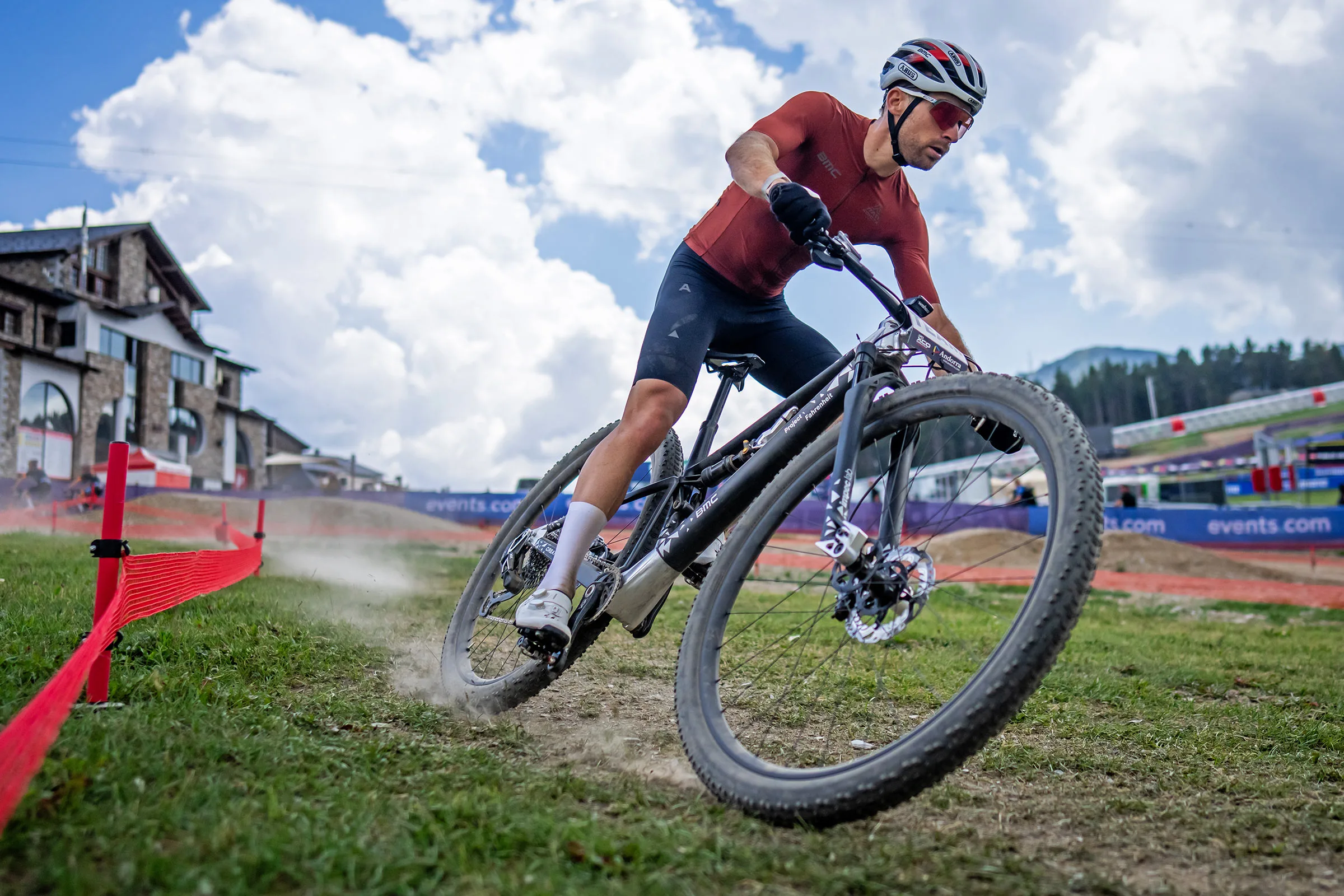
The short answer to that is a resounding no.
BMC was clear when we asked that this is nothing more than an R&D-led project to explore the pros & cons of a 32″-wheeled XC bike. They don’t have any current plans to turn this into a production 32″ Fourstroke. But to be sure whether 32” XC bikes are the future, BMC figured they should build one and get their own impressions on how it rides.
There are still real obstacles to making a 32″ XC bike on a production scale, simply from the limited component specification offerings – specifically wheels, tires, and suspension forks.
But if the bike’s performance makes sense, and parts spec options expand, BMC wants to be ready to run with it.
How did BMC make a carbon 32″ bike work?
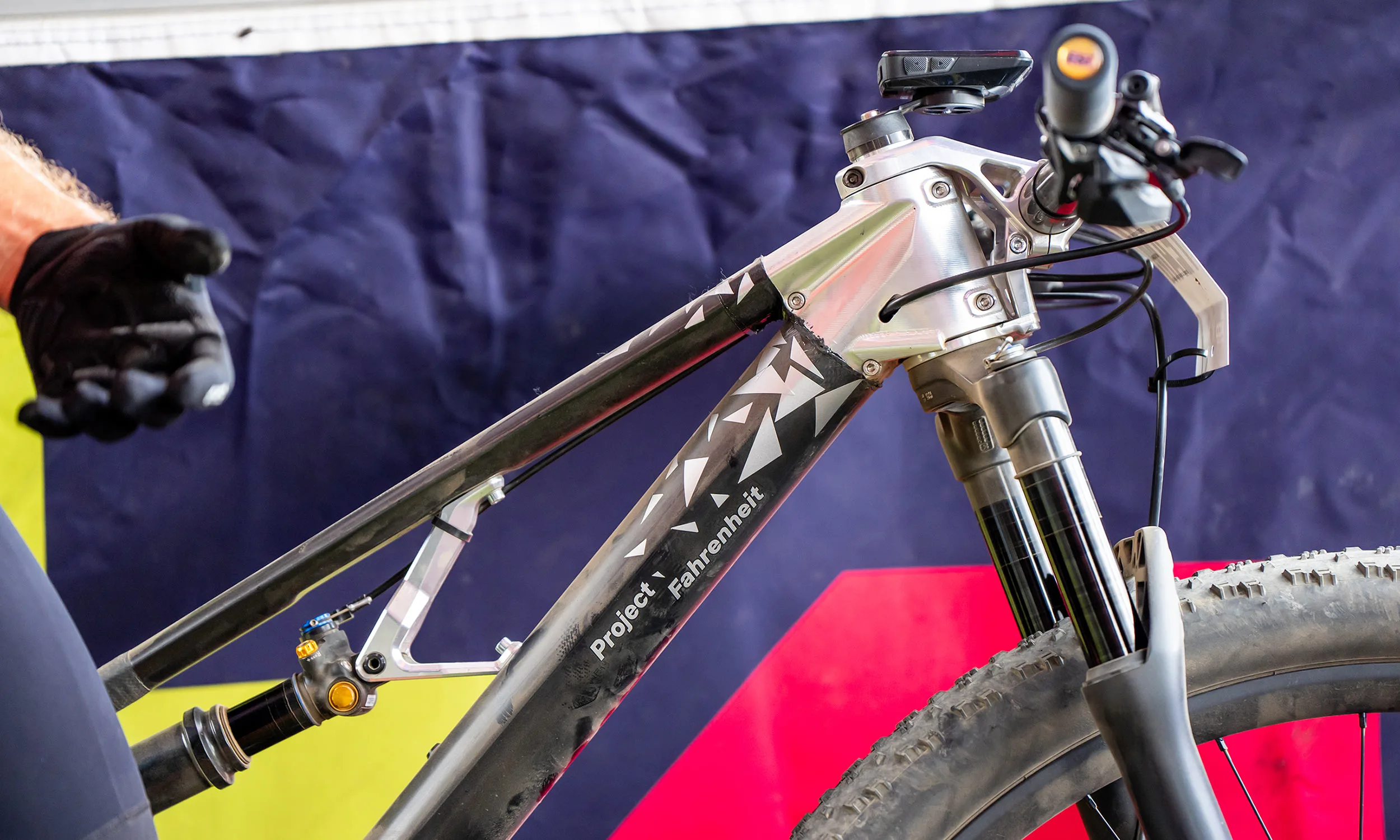
The biggest effort to make this work was BMC’s own Impec Lab cutting the headtube, bottom bracket, and rear dropouts out of a standard size Medium carbon 29″ Fourstroke, then slicing the toptube in front of the seattube.
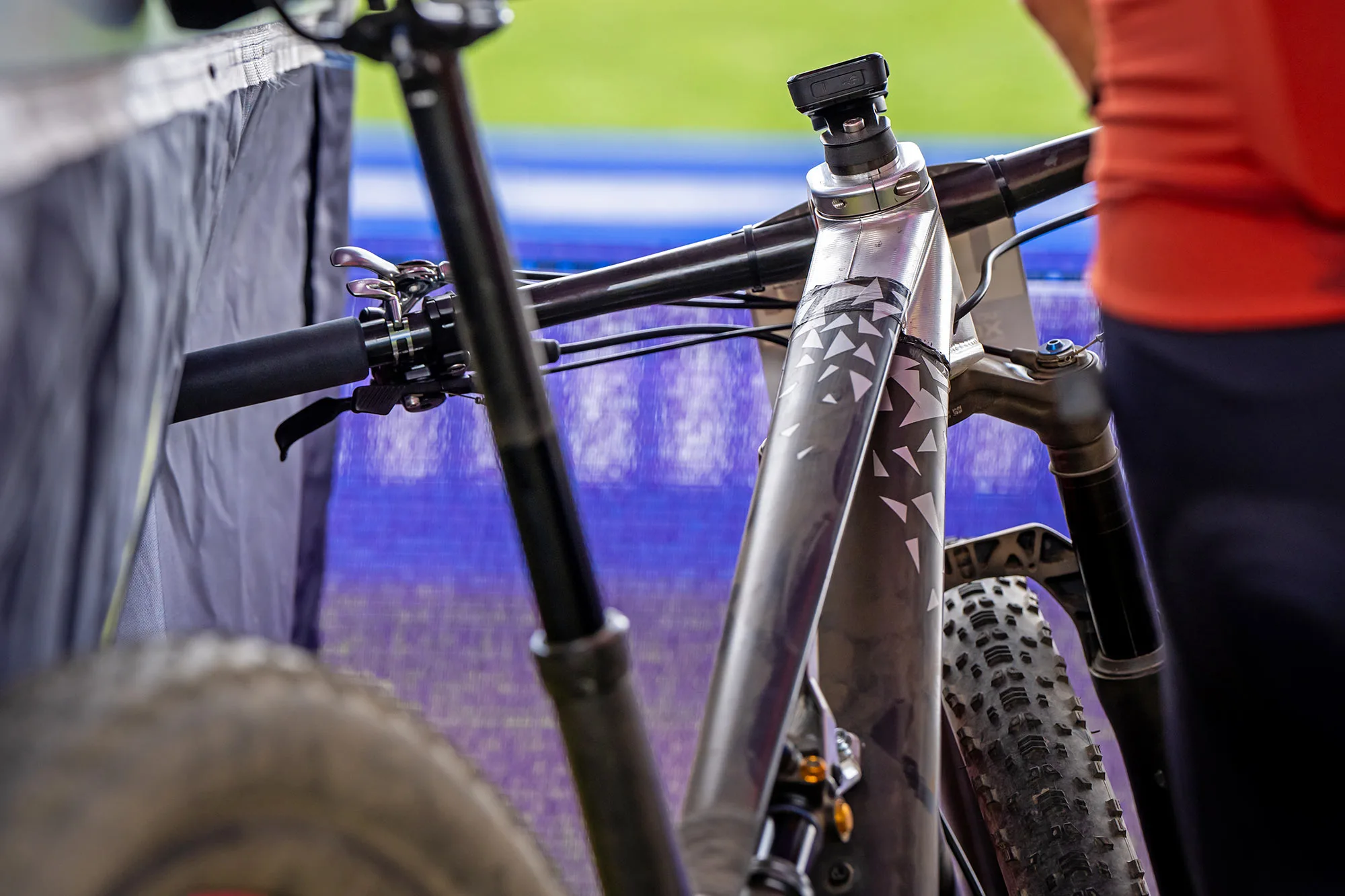
To put it all back together, the Impec R&D crew designed and engineered new clamshell aluminum frame junctions to keep the same Fourstroke geometry, more or less. Then, they CNC-machined the new parts in-house and bonded the carbon tubes from the donor 29er frame.
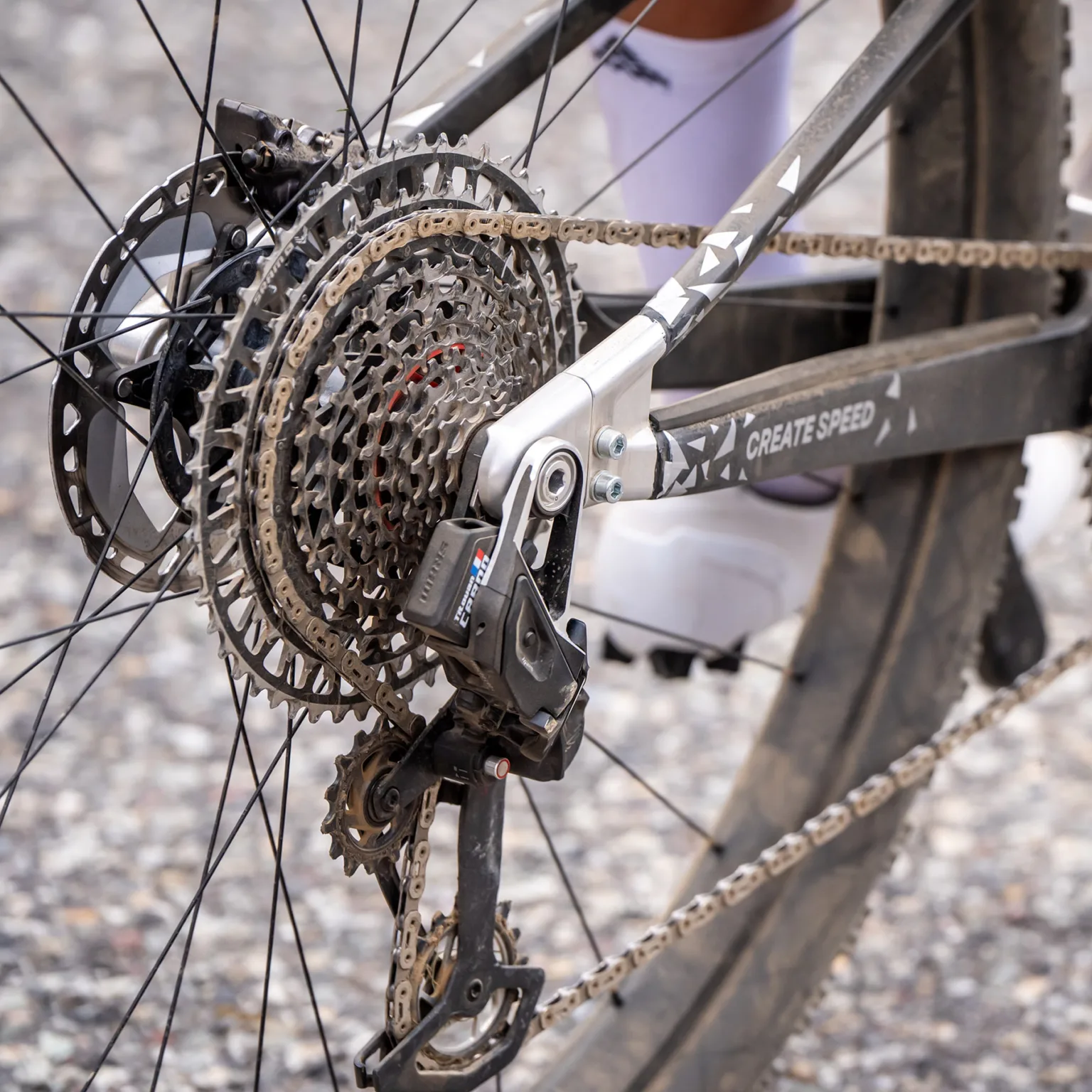

Maxxis 32 x 2.4″ Aspen tires. They get their labels blacked out because their factory team’s relationship with Pirelli… who are rumored to be developing their own 32″ tire!
Unlabeled 32″ alloy rims drilled for 28 spokes, front & rear. Again, no names since the team rides Duke wheels… again, who are rumored to be working on 32″ carbon rims!
Wildly modifying a DT fork!

DT Swiss F 232 One fork, modified with bolt-on dropout extensions that extend the axle-to-crown height, but don’t change fork offset. BMC didn’t explain why they used a DT fork vs. the race team’s Öhlins or their OEM stock Fox or RockShox forks. But perhaps the hollow, straight lower walls and the flat machined fork ends of the DT fork simply made for a more secure connection to attach an extension?

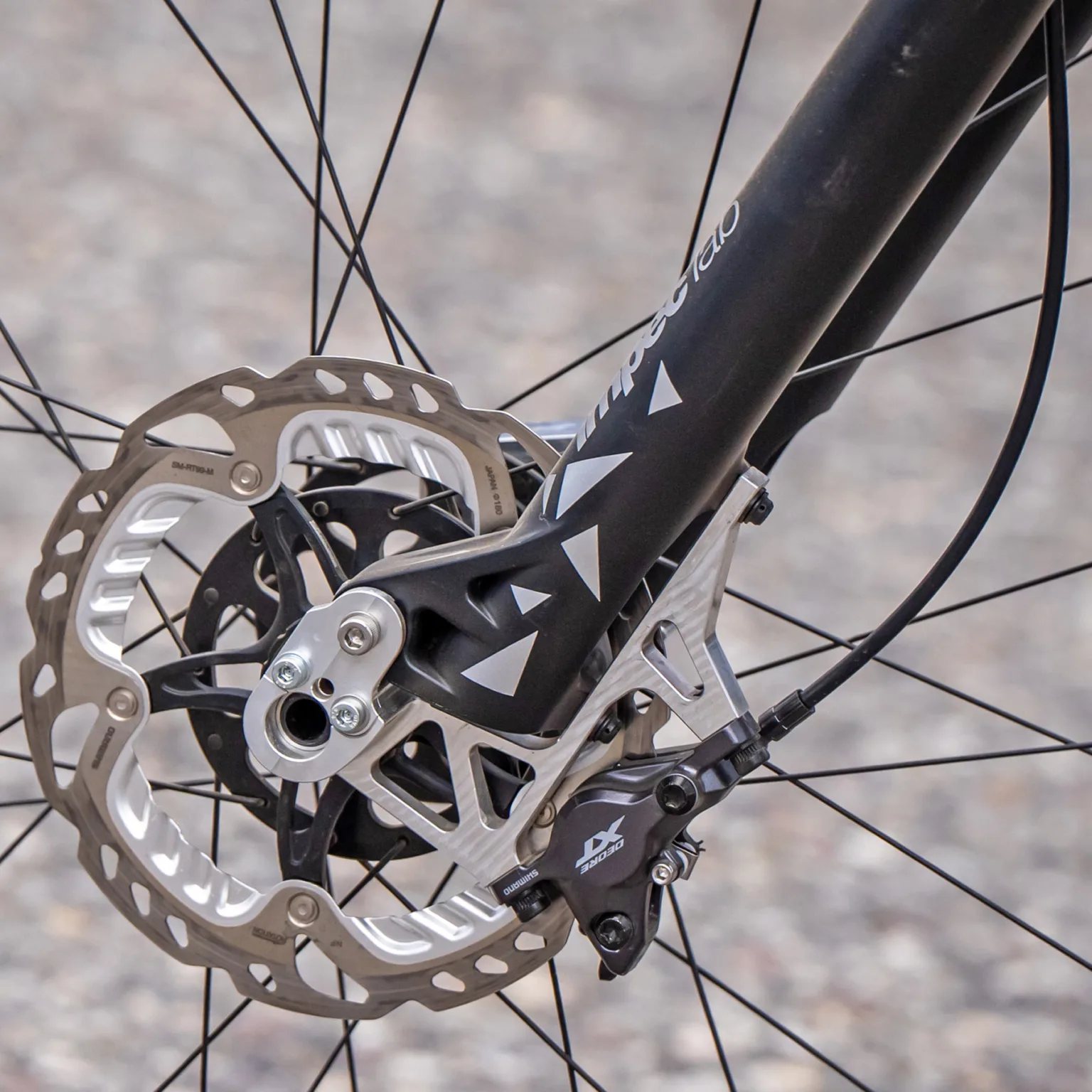
It does seem that front suspension is one of the major limiting factors for the bigger wheels to make it into elite racing, as it simply takes longer for suspension sponsors (like BMC Factory Racing’s partner Öhlins) to create new 32″ forks (and decide on important details like fork offset, and axle width).

Maintaining the same ride height was also a bit tricky since the frame Stack increased with the larger diameter wheels. So the BMC Impec Lab team also designed and machined their own all-new wild stem. Developed to drop the bar position back down in front of the headtube, the Impec crew created a stem that connects to the fork’s steerer tube both below and above the headtube, clamping with a single bolt above the frame, but then bolted from the bottom as well with just enough movement to tighten the headset in between.
Interestingly, the stem and machined headtube also integrate a steering stop, presumably to keep the fork crown from hitting the straight carbon downtube.
Why Andorra?

It looks like BMC brought the bike to Andorra to show off a bit. With all the other teams and many competing bike makers on site before the summer racing break, BMC seems to be bragging about how quickly their Impec Lab R&D crew could crank out the first serious rideable full-suspension test bike.
If you don’t count Faction Bike Studio’s recent Big Ben 32″ project, which we haven’t seen get dirty yet. DirtySixer has also worked on 32″ hardtails for years, and teased a production version just last month. Rumor has it, DirtySixer also will unveil a full-suspension 32er as early as next month!
It sounds like the BMC 32″ Frankenbike project started just back in March when Maxxis sparked interest in bigger XC wheels with their Taipei announcement of the 32″ Aspen. And they likely aren’t the only bike brand working on the bigger wheels, now!
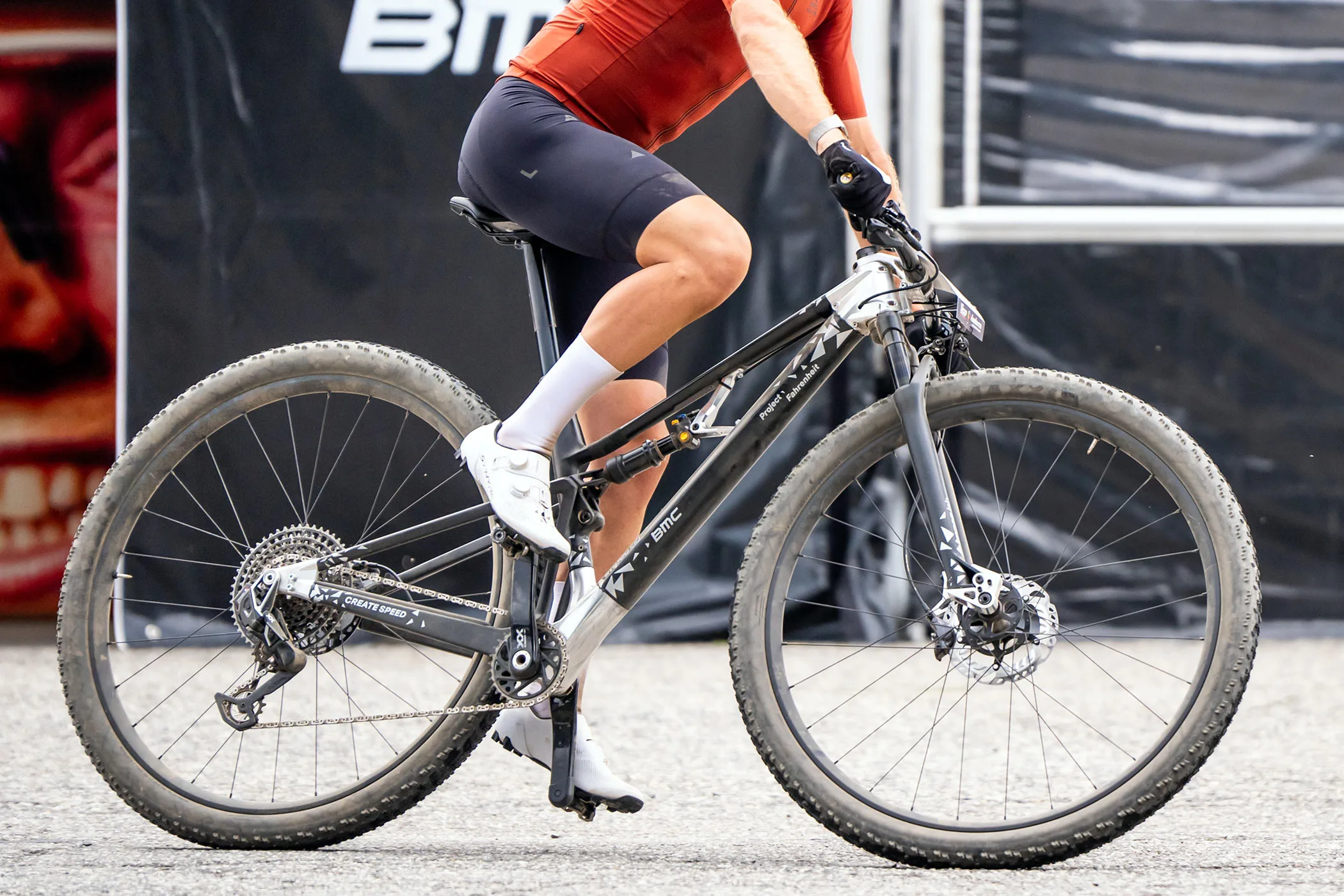
But beyond showing off to the competition that BMC is firmly at the forefront of XC development, they genuinely wanted to test how the big wheels and big bike would perform on a proper World Cup racetrack. To gather real, quantifiable performance and telemetry data from an actual XC racetrack and real-world course conditions, and to also get real feedback from their elite factory team XC racers.
So, how does it ride?

BMC says that they stayed conservative with only minimal geometry changes compared to the stock 29er Fourstroke, as they really just wanted to see how the bigger wheels change the ride.
We didn’t get any photos of their 29er benchmark. But BMC said they built up a standard size Medium 29er Fourstroke with the exact same fit, same suspension setup, and same but smaller 29×2.4″ Aspen tires to ride back-to-back laps for direct comparison.
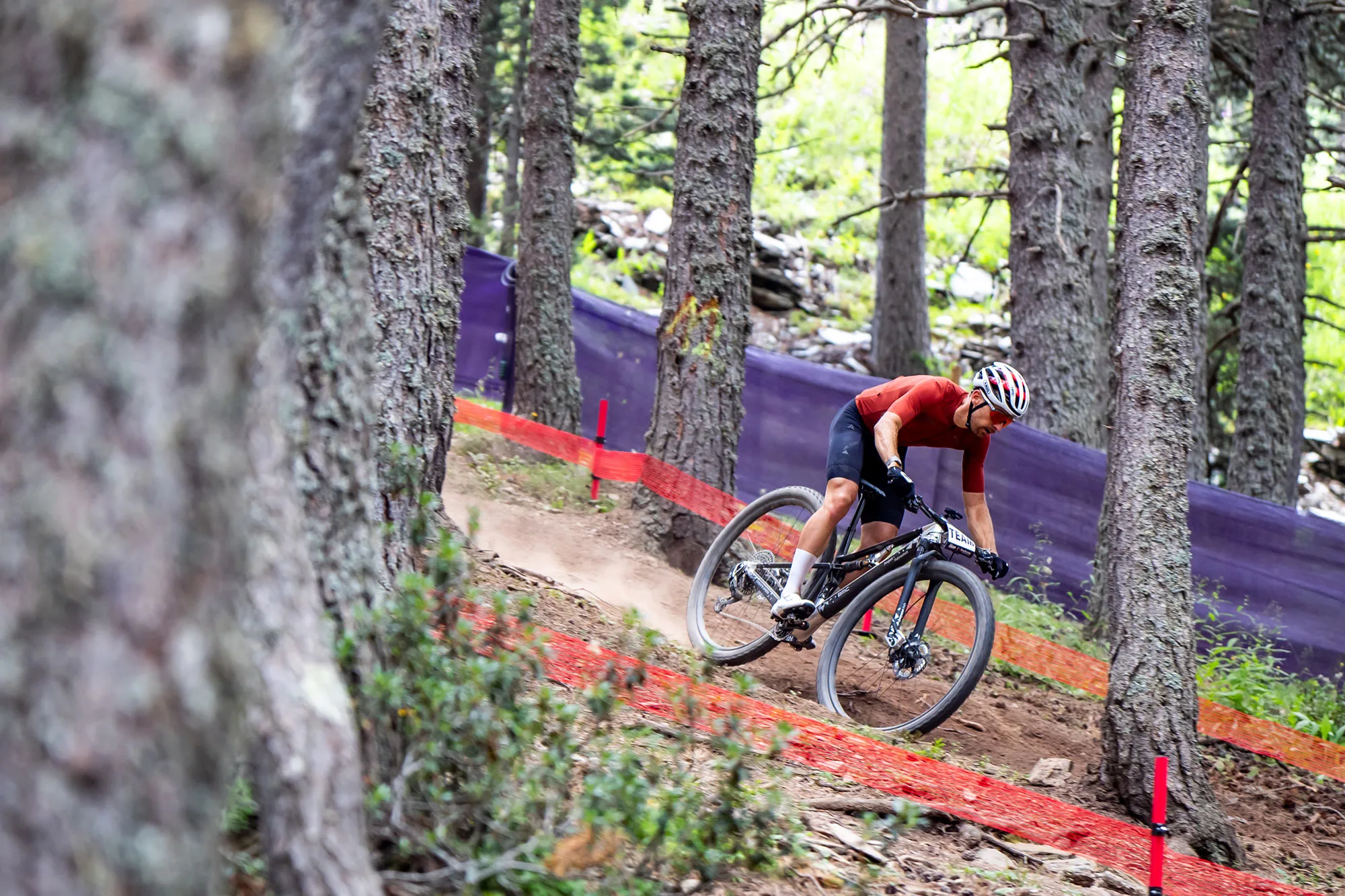
The R&D crew’s first impressions were that the bigger wheels truly delivered more grip over the track’s most rooty terrain, and the big rear wheel felt like it provided more ‘support’ when pushing the suspension through its full travel on the rougher sections of the course.
No word yet what BMC Factory Racing’s Titouan Carod thought after riding it earlier today for the first time.
Are 32″ wheels really all that much bigger than 29″ (or even 27.5″)?

Let’s first be clear that 29″ wheels often don’t exactly measure 29″ in diameter to start with, nor do 27.5″ measure 27.5″.
32″ is a 686mm bead seat diameter, up 64mm from 29er’s 622 BSD, which was only 38mm more than 27.5’s 584 BSD.
- For comparison, a 27.5×2.0″ tire is ~27.0″; 27.5×2.4″ is ~27.8″; and 27.5×2.6″ would be ~28.2″ tall.
- A 29×2.0″ tire is about 28.5″, a 29×2.4″ would be 29.3″, and a 29×2.6″ tire would be almost 29.7″ in diameter.
- So, these new 32″ x 2.4″ tires should theoretically measure approximately 31.8″ in diameter.
A 2.25″ wide tire is a more accurate frame of reference for comparing 27.5 & 29, although it has become a less common tire size. A 2.25″ 29er tire measures closest to a real 29″, and the same 2.25″ width for 27.5 is closest to actually 27.5″. But a 2.25″ 32″ tire would only measure 31.5″ in diameter. So, it’s not quite the 3″ jump the naming would suggest.
If we just look at the step in rim diameter, then split that in half, that means your axles and resulting ride height will be 32mm or 1.25″ higher off the ground. That also means the chainstays and fork legs will need to be about that same amount longer to fit the larger wheels. Likely adding up to full 64mm or 2.5″ increase in overall wheelbase length, all things being equal.
It’s certainly a sizable jump. But at the same time, we’ve seen so much recent variation in geometry from one bike to the next, that I’m no longer shocked if one brand’s Large mountain bike has 32mm longer frame Reach than another brand’s size Large.
32″ will likely be for medium to larger riders in any case…

But with that said, BMC also recognizes that 32″ wheels are not likely to make sense for smaller riders. Their unusually complex (or maybe even convoluted) stem solution is a perfect example of how tricky it might be to even get a medium-sized rider to be comfortable on the larger wheels.
Many unanswered questions remain!

BMC’s Impec Lab took the initiative to crank out a rideable XC prototype bike with 32″ wheels pretty quickly, but they definitely haven’t yet answered all of the open questions about whether 32″ wheels even make sense in the first place. Of course, that’s exactly why they built the bike, do try and answer these questions with real-world experience.
But we still have plenty of questions. Leave your questions, or your thoughts on answers to our in the comments below!
- Will it make sense to go with narrower/wider tires or rims to offset the different contact patch shape of the 32″ setup?
- Would it be worth making lighter tires, rims, wheelsets, or even frames to offset the additional weight of the larger diameter setup?
- Does a small rider, a medium rider and/or a larger rider actually benefit more or less from 32″ wheels?
- Are different-size XC racers actually interested in racing on 32″ wheels?
- Should suspension travel length be reduced or rethought with the bigger wheel diameter/tire attack angle?
- Does tire pressure or even suspension damping setup need to change with the larger wheel size, too?
- Should bike geometry be made steeper/faster to balance the inherently more stable, larger wheels?
- Is real bike frame, fork, or wheelset stiffness significantly impacted by the longer fork legs, longer seat/chainstays, and longer spokes with reduced bracing angles?
- Should 32″ XC wheels be built on SuperBoost or even bigger Fatbike hub spacing to overcome reduced wheel stiffness?